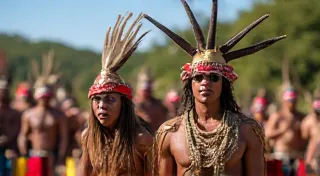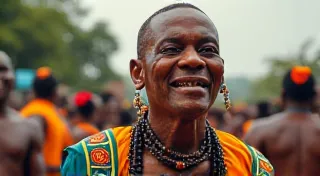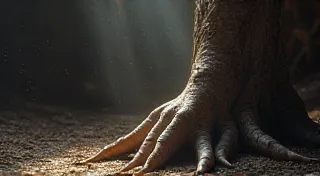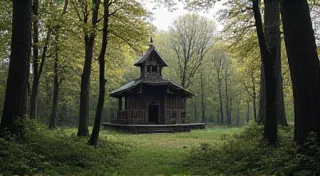The Art of Romanian Mascarade Masks: A Winter Tradition
The Romanian winter holds a magic unlike any other, and at its heart lies the vibrant tradition of Mascarade, also known as Masca. More than just a celebration, it's a complex performance imbued with ancient symbolism and steeped in cultural heritage. Central to this spectacle are the meticulously crafted masks, each one a testament to regional artistry and centuries of tradition. This article delves into the fascinating world of Romanian mascarade masks, exploring their history, symbolism, and the intricate techniques used in their creation.
A History Rooted in Pagan Rituals
The origins of Romanian Mascarade are shrouded in the mists of time, likely stemming from pre-Christian pagan rituals designed to ward off evil spirits and ensure a bountiful harvest. As Christianity spread, these pagan customs didn't disappear; instead, they syncretized with Christian beliefs, becoming integrated into the winter celebration that we know today. The masks themselves are believed to represent spirits, both benevolent and malevolent, and the act of donning them allows performers to temporarily embody these entities. The chaotic nature of the celebrations, the loud noises, and the masked figures themselves served to confuse and scare away any lingering bad luck. The practice of using masks to represent spirits isn't unique to Romania; cultures around the world employ similar techniques to connect with the unseen, as seen in the intricate Tibetan Opera Masks, which depict gods, demons, and heroes within their own rich traditions.
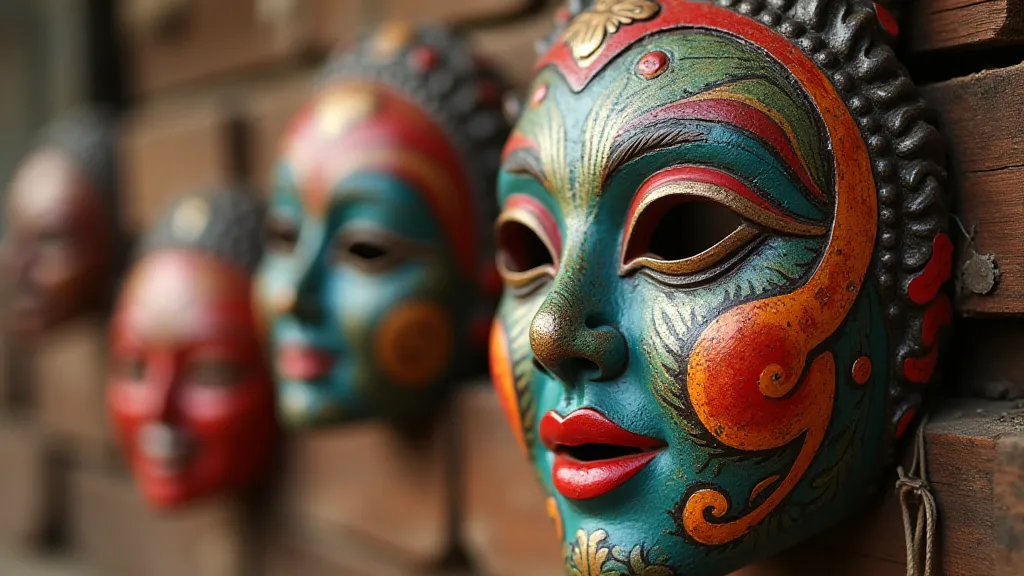
Regional Variations: A Tapestry of Styles
Romanian Mascarade isn't a monolithic tradition; it varies considerably from region to region. Each area boasts its own distinct style of mask, reflecting local customs, folklore, and available materials. For example:
- Maramureș: Masks here are often large, imposing, and feature exaggerated facial expressions, frequently depicting animalistic or demonic figures. They are often brightly colored and utilize natural materials.
- Oltenia: Masks in Oltenia tend to be smaller and more detailed, often depicting human characters or mythical creatures like the *Strigoi* (a type of vampire) or the *Sofocul* (a mischievous spirit).
- Banat: The masks of Banat demonstrate a blend of Romanian and Hungarian influences, showcasing unique color palettes and design elements.
This regional diversity is a crucial aspect of the tradition, highlighting the unique cultural identity of each area. The dedication to preserving the artistry and symbolism of these regional variations mirrors the efforts seen in other mask-making traditions, such as those of the Tlingit people of North America, where masks of the Tlingit people are inextricably linked to raven tales and spirit connections.
The Craft of Mask Making
The creation of a Romanian Mascarade mask is a labor of love, often passed down through generations of skilled artisans. The process typically involves:
- Wood Selection: Linden wood (basswood) is the preferred material due to its softness and ease of carving. The wood is usually sourced locally and dried properly before carving.
- Carving: The mask is meticulously carved using hand tools. The artisan may use templates passed down through the family, but each mask is ultimately unique, reflecting the individual craftsman's skill and artistic vision.
- Painting and Decoration: Once the carving is complete, the mask is painted with vibrant colors, often using natural pigments. Decorative elements like feathers, bells, and fur are frequently added, further enhancing the mask’s visual impact.
The choice of colors isn’t arbitrary; each color holds symbolic meaning, contributing to the overall message conveyed by the mask.
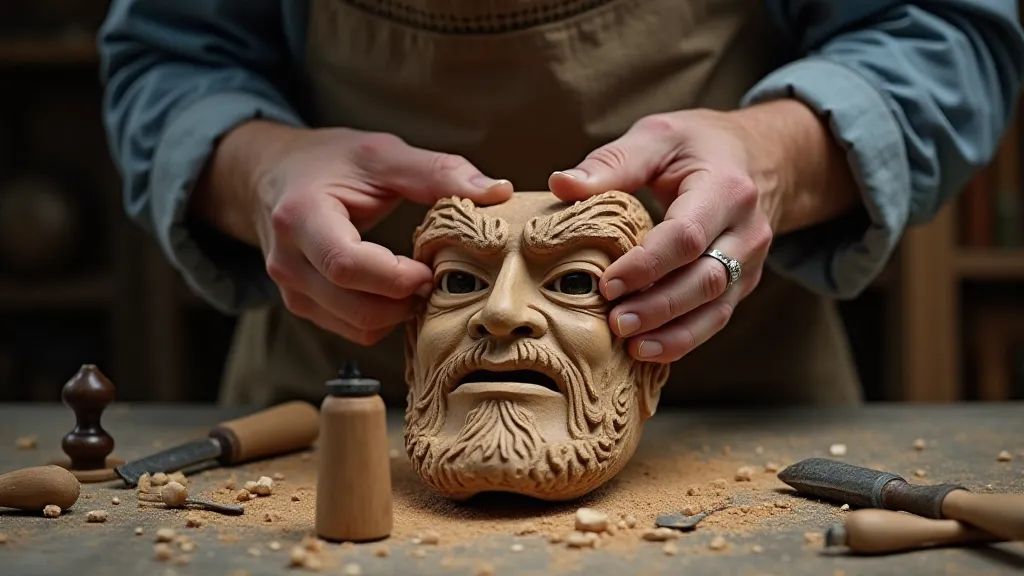
Symbolism: More Than Just a Face
Romanian Mascarade masks aren’t simply decorative objects; they are powerful symbols deeply embedded in folklore and tradition. The exaggerated features and colorful paints often represent the power to drive away evil, to ward off the winter. The various characters portrayed by the masks – from the “bear” (Ursul) who embodies strength and fertility to the *Capra* (goat) who brings blessings – each play a vital role in the celebration. The act of donning the mask represents a temporary transcendence of the wearer's identity, allowing them to connect with the spirit of the tradition and the ancient forces it represents. The use of animal representations, particularly those associated with blessings and good fortune, resonates with traditions from around the world, even those celebrating life and remembrance, like the vibrant and meaningful Mexican Day of the Dead Masks.
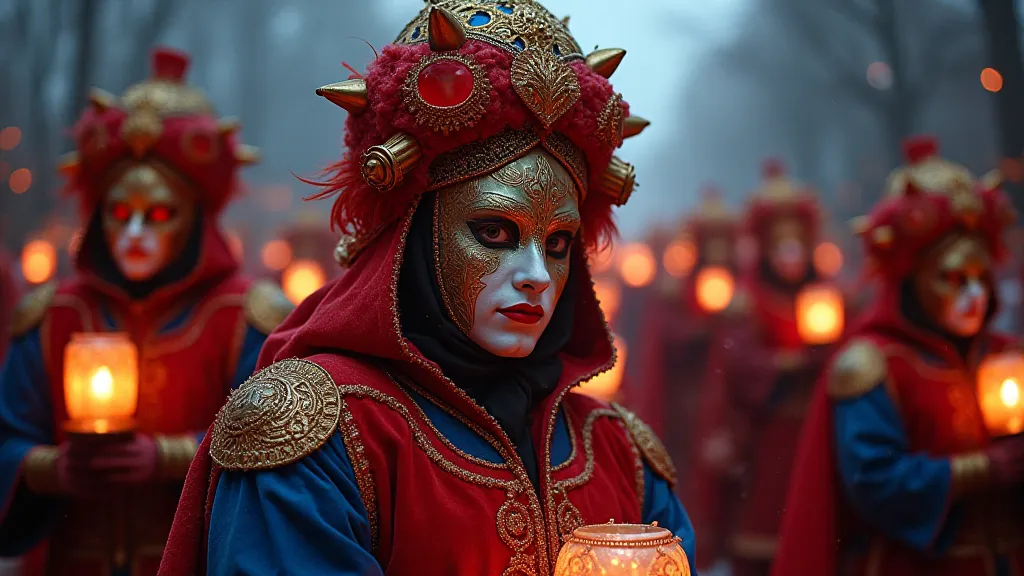
The Evolution and Significance of Characters
The characters that appear within the Mascarade procession aren't random selections; they’re embodiments of deeply held cultural beliefs. The 'Ursul' (bear) symbolizes strength, fertility, and connection to the natural world, often leading the procession and acting as a protector. The 'Capra' (goat), often depicted with horns and a playful demeanor, represents abundance and blessings for the coming year. Then there are the more complex characters, those with ambiguous natures – sometimes benevolent, sometimes mischievous. These figures, like the *Strigoi* representations seen in Oltenian masks, serve to both entertain and remind the community of the importance of vigilance against unseen forces.
The Role of Music and Performance
The visual spectacle of the Mascarade is only half the story. The entire performance is accompanied by traditional music, often played on woodwinds, percussion, and stringed instruments. The rhythm and melody contribute to the overall atmosphere of celebration and chaos, further confusing and warding off any lingering misfortune. The masked performers don't simply walk; they dance, they leap, they interact with each other and with the audience, creating a dynamic and immersive experience. The layered combination of visual spectacle, music, and performance is a key element in the tradition's enduring appeal and its power to connect people to their cultural heritage.
Challenges to Preservation and the Future of the Tradition
Like many traditional arts and customs, Romanian Mascarade faces challenges in the modern world. Globalization and urbanization have led to a decline in the number of traditional mask makers and a decrease in the frequency of Mascarade celebrations in some areas. The rising cost of materials and the lack of economic incentives for young people to learn the craft also contribute to the problem. However, there is a growing awareness of the importance of preserving this cultural heritage, and efforts are underway to support mask makers, document the history and techniques involved, and educate younger generations about the significance of the tradition. The continued practice of these traditions demonstrates a parallel to other, deeply rooted celebrations, such as those found in Kerala, India, where intricate masks of Kerala, India are used in Kathakali and Theyyam traditions, highlighting the enduring power of masks to tell stories and connect communities.
Preserving a Living Tradition
In an increasingly globalized world, preserving traditions like Romanian Mascarade is vitally important. Efforts are underway to support mask makers, document the history and techniques involved, and educate younger generations about the significance of this cultural heritage. By understanding and appreciating the art of Romanian Mascarade masks, we can ensure that this vibrant and meaningful tradition continues to thrive for generations to come.
